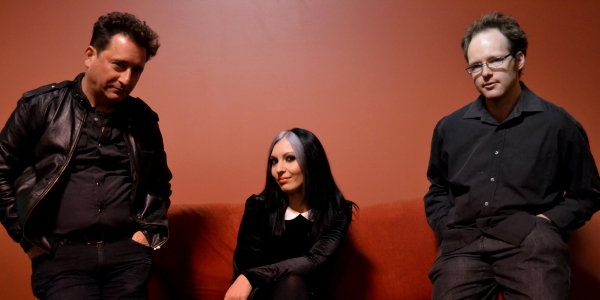The First Peoples day opens the Bunjilaka permanent exhibition at the museum, a unique museum experience based around indigenous voice. Artists on the day include some outstanding Aboriginal performers: Archie Roach, Kutcha Edwards, Yung Warriors, Dave Arden, Maza Sisters, Deline Briscoe, Benny Walker; as well as dance performers Dardee Balagamdail, Gindan Jalbu, Snakey Ellis dance group, Palanu dance group and Jindi Warabuk.
A Yorta Yorta/Bunjalung man himself, Patten is thrilled to be part of something that was created in close consultation with community. “I get to do the fun stuff, programming for the opening of the Festival and the educational part of the exhibition,” he says. “Each and every area of Victoria is represented, from Swan Hill to the upper Murray, people came from all across the state and really helped to flesh it out. Every three to four weeks we’d get a group of community members together, young and old, to act as our brains trust in shaping the exhibition.” In fact, Patten describes the exhibition as ‘Koori curated’. “Previous exhibitions have been shaped by curators. This time around, it’s by Koori curation.” The logistics of pulling such an extensive exhibition together seem huge. How did the Museum find the right people to talk to? “We’re lucky in that Victoria is a small state and Aboriginal people are a tight-knit community,” Patten says. “Everyone knows everyone. It began through a series of consultations. I’ve been involved for two and a half years and the process started even before then. We’ve had such a big lead in; we’ve all had many ideas about how we’d like to kick things off, how to welcome the public. We’re all passionate about finding the right balance.”
Many stories want telling, Patten notes, especially concerning with the diversity of Aboriginal groups in our state. “A natural element of the exhibition is putting Victoria in context, showing how unique Victorian cultures are compared with other indigenous communities. Every different Koori group is a different culture.” As well as sharing stories, histories and knowledge of communities, in the Deep Listening Space individual voices, from people of all ages, speak to the experience of being Koori. “The community felt we wanted people to hear stories about us, about identity,” Patten elaborates. “What does being a Koori person mean?” Along with the Deep Listening Space, Creation Cinema offers a ‘visually stunning, immersive light and sound experience transporting visitors to the time of Creation through the story of Bunjil,[‘ and a personal virtual visitors guide to the exhibition, the Messenger. Some of the best fun will be had by the Boorais (children), who will not only be enjoying the dance and music but also watching animations about tradiitional Koori toys and making their own bullroarers, playthings also used as alarms in case of impending threat and to warn women off encroaching on ceremonial men’s business.
Bunjilaka comes from the Boonwurrung and Woiwurrung word ‘Bunjil’. ‘Bunjil is a wedge-tailed eagle and, for most of Victoria’s Aboriginal language groups, a Creation Ancestor. ‘Aka’ means land or place. Bunjilaka comprises an entirely new approach to museum exhibition where history, ancient and modern, and current lived experience form an immersive cultural sharing. Patten describes the exhibition as being ‘deeply representative’ of Victoria’s various Aboriginal cultures, old and new: the exhibition includes, for example, commissions from living Koori artists.
Elements of more recent Koori history are especially meaningful to Patten along with many other indigenous Victorians, namely stories and photographs from the Coranderrk community, they of the Government Enquiry into the management of the mission in 1881 when a delegation from the community walked the sixty miles from Healesville to Spring St to present their grievances to the State government. “My great-grandfather was taken to Coranderrk as a four-year-old,” says Patten. ”So many people in Victoria have a connection with Coranderrk; it was a melting pot of many different groups. There’s a collection of photographs on the walls,” Patten continues.”People from the 1860s, a story about Mount William which is named for William Barak who was the last custodian of Coranderrk. There’s a story speaking about men’s business in relation to a painting Barka produced. A man had taken some greenstone without permission to make an axe. The painting shows a group of different men meeting to determine his punishment.” The Coranderrk memories are placed in the section pertaining to mission life in Victoria. As a body of knowledge for Koori people to engage with in a culturally appropriate environment, the First Peoples collection has a special home – its ‘keeping place’ – at the Melbourne Museum, the first point of call for anyone wishing to learn more about Aboriginal Victoria.
BY LIZA DEZFOULI







